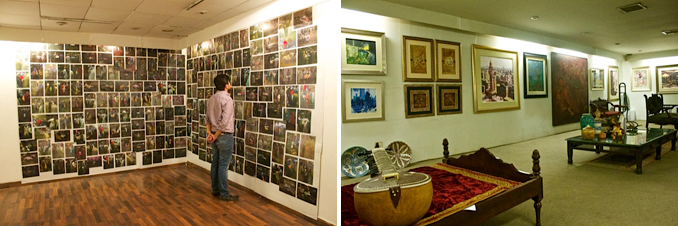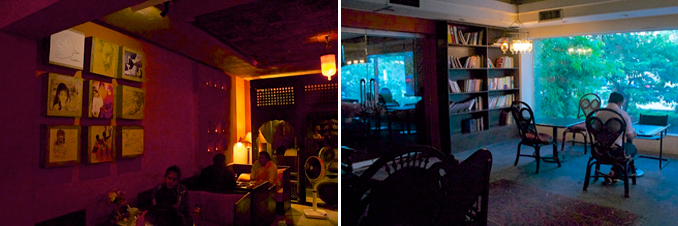
Written by: Aleeza Rasool - Posted on: May 10, 2014 |  Comments
Comments
Google Translation: اُردو | 中文
Lahore has always been famous for its rich cultural heritage and a vibrant and energetic populace. There was a time when it was known as the hub of theatre, music, fine arts, literature, poetry and intellect. Many of the great artists from the sub-continent belonged to this rich city. Those who did not, but nevertheless aspired to be ‘great’- put their efforts into making their way into the intellectual circles of the city. However, during the nine-year regime of military leader Zia-ul-Haq, many of these thriving art forms suffered tremendously as Zia put free expression on suspension. The years, which have followed have seen various efforts towards the revival of the dying cultural values of the city of Lahore. One of such efforts is the Nairang Gallery located at the corner of the Jail Road and Canal Bank.
 |
This Gallery was the vision of Nayyer Ali Dada, Pakistan’s award winning architect, famous for designing the Al-Hamra Art’s Complex in Lahore. It was founded in the year 1996 and was conceived as a place for showcasing and promoting all art forms such as fine arts, photography, film, music, literature and handicrafts. His vision stands realized as Nairang provides a rich mix of all of these modes of human expression. The items range from the ancient to the contemporary, exposing and promoting not only traditional arts but also encouraging the growth of contemporary talent of young and budding artists (Pakistan’s Cultural Events Guide).
The gallery is in two stories that house four large halls adorned with beautiful paintings, photographs, sketches, carpets, lamps, jewelry, and renditions of animals in stone, metal and wood, as well as furniture. In the paintings, the collection ranges from the art work of Shakir and Sadeqain to young contemporary artists (Ibid). The upper section of the gallery also contains a reading room and a library with shelves that hold books on the arts of painting, sculpture, ceramics, literature, architecture, drama, film, music, poetry and the environment. In addition to books, a large archive of rare music is also on display on the walls of the library with the genres ranging from Indian and western classical to ghazals and folk music. A beautiful, dimly lit restaurant and café is also available on site to provide art connoisseurs with refreshment and relaxation.
 |
According to Mr. Asif, the General Manager of the gallery, various exhibitions displaying the works of young and budding artists are organized on a regular basis to provide them with a platform for showcasing their talent. There are also monthly Baithaks held at the gallery where prominent artists and intellectuals engage in discussion and reading surrounded by an engaging audience. In addition, the gallery also hosts many international and local events such as lectures and seminars for increasing people’s awareness regarding the fields of art and culture.
 |
Despite all these efforts, art and culture still represent a niche interest within Pakistan. Being an Islamic country, a certain section of its population looks with skepticism towards these fields partly because music and rendering of the human form in any medium is forbidden within Islam. However, efforts should continue towards achieving a healthy balance in society; where there is free expression, which does not threaten or compromise the society’s cultural and religious values.
All images provided by the author